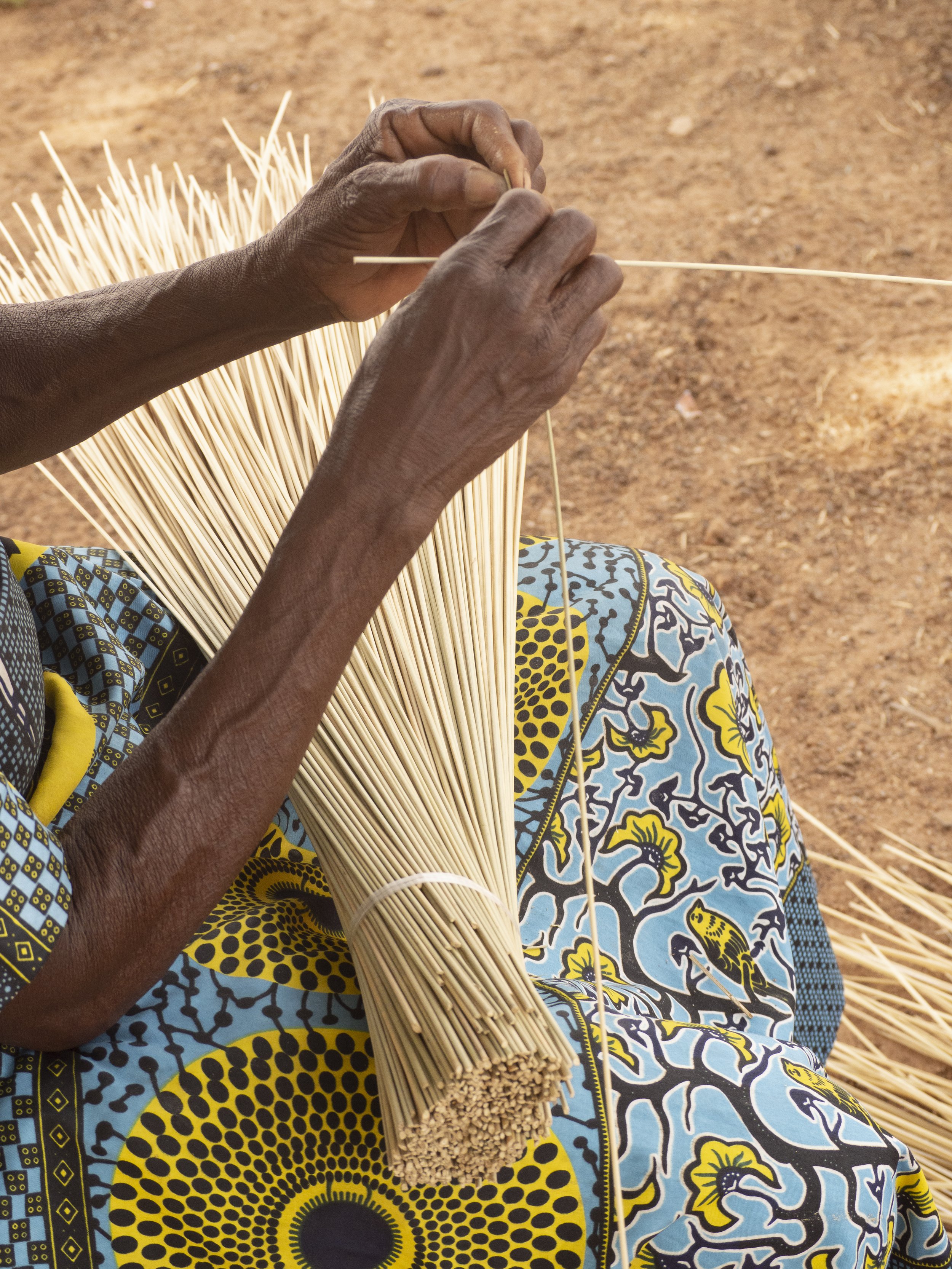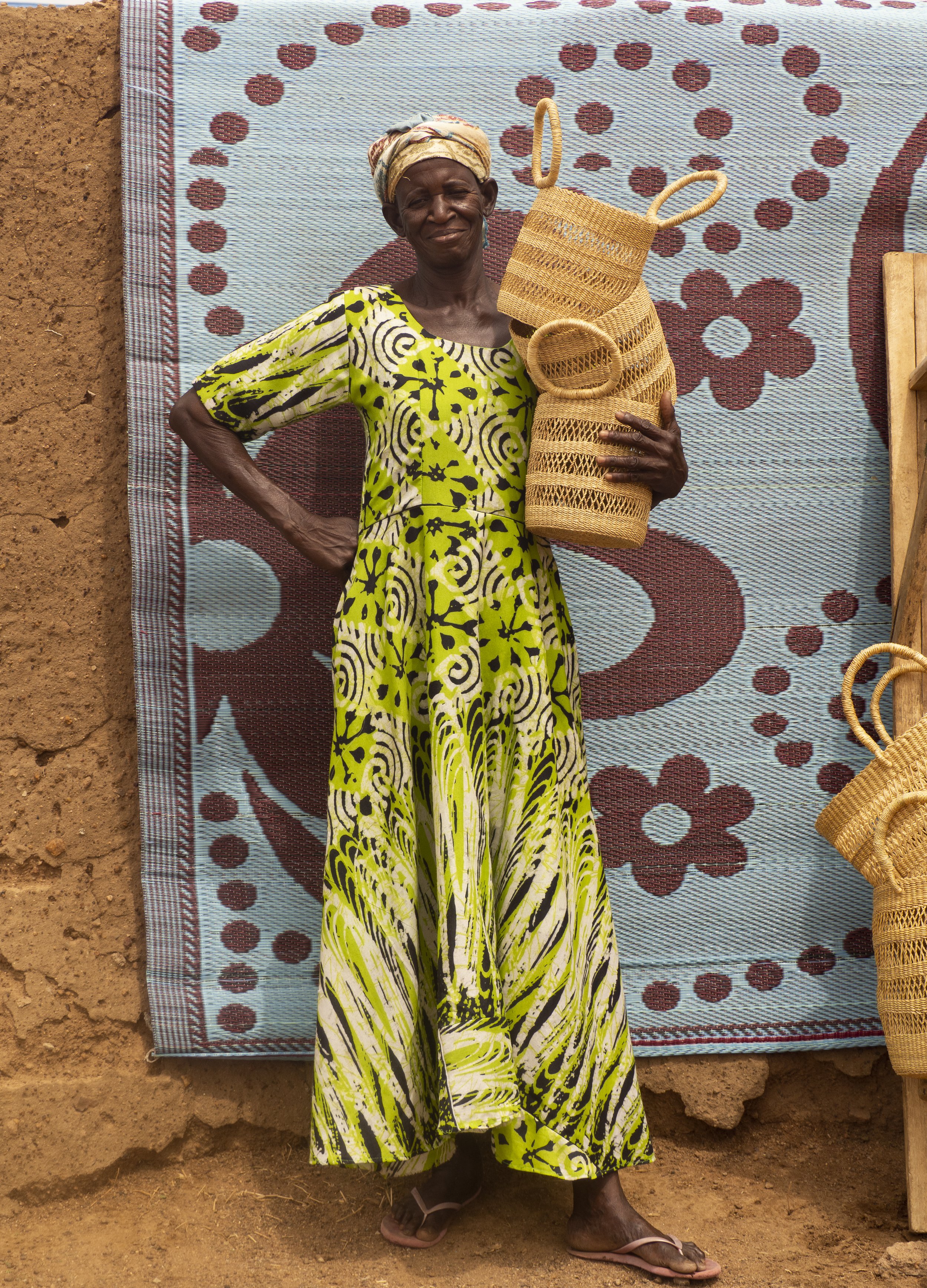From Grass to Woven Art
From Grass to Woven Art
Basket weaving is a common form of art, but an uncommon skill for many. It develops deep roots in ethnic groups; supports the passing of a craft for generations while creating a community feeling among the members.
Several regions have adopted the art of basket weaving, and it's fast becoming a common lifestyle for local communities; for some weaving may be symbolic, and for others weaving may be a is income source.
This art tradition has faced a number of risks modernization poses. The young local members may let go of their craftsmanship for greener pastures; largely because the artisan economy, in general, is not preserved enough.
Aketekete is at the forefront of preserving the artisan economy, by empowering craftsmen through education on sustainable productions and business profitability.
If you're an avid researcher of crafts, you would have wondered why some basket designs differ from others, or why some particular shapes are produced by some particular people. Weaving techniques are unique and special on their own. Because of the cultural diversity of regions, distinct materials grown there, and usability of products. Materials for weaving are sourced, and grown naturally, and harvested in due seasons too. Materials range from one community to another; materials for weaving consist of natural fibers including roots, cane, twigs, and grasses; reeds, raffia, and basket willows are commonly known.
With special reference to notable weaving communities, let's take a look at the Bolgatanga people who produce the "Bolga Woven Basket".
Bolgatanga is the capital city of the Upper West Region in Ghana, noted for its excellent weaving skills. This region is known as the crafts center of Northern Ghana where a lot of talented craftsmen and women gather to create extraordinary pieces.
These Bolga baskets are woven exclusively by the indigenous "Gurune" people also known as the FraFra tribe.
Bolga baskets make you astonished at their designs; they're noted for their sturdy feel, unique patterns, and colourful nature. The Bolga baskets can be such a long task to complete because of the uniqueness of each piece.
Traditionally, grain that had been gathered that year or all household utensils were stored in Bolga baskets. Bolga baskets were also known to be used for funeral rites as part of the offerings. Now, are known and used as highly functional decorative pieces.
The first stage of production is the harvesting of the veta vera straw, at the top of the grass locally known as Kinkahe. They harvest the top only so the grassroots in the soil can regrow. The vera vera grass harvested is left to dry for a few days before the weaving work start. First, the straw is split into vertical halves, that will be bundled and hand-twisted to make the straw flexible.
One of the most crucial steps and a must for successful weaving is choosing the proper material. To ensure the ideal weaving quality, the length, thickness, and natural color of the grass must be taken into consideration.
As an extra design attractive, weavers can decide to dye its material to give their baskets a new design. The straw bundles are dipped into the boilers which results in vibrant ever-lasting colours. Concentrated cloth dyes and the plant-based dye may be used in the coloration process.
When the material is ready and properly selected, they start weaving from the base to the top following a circular path using two bundles of straw. The rims are generally finished flat, or wrapped with straws.
There are a variety of handle finishings, a sturdy wrapping technique with a grass core, or leather handles applied by local leather workers.
Bolga baskets are such a treasure piece to have and keep.
If you have one, take some time to look over the colours, and patterns.
To understand the complexity of its woven work.
The tradition which is being preserved by passing it on to the next generations.
Remember, you can hold art in your hands.




